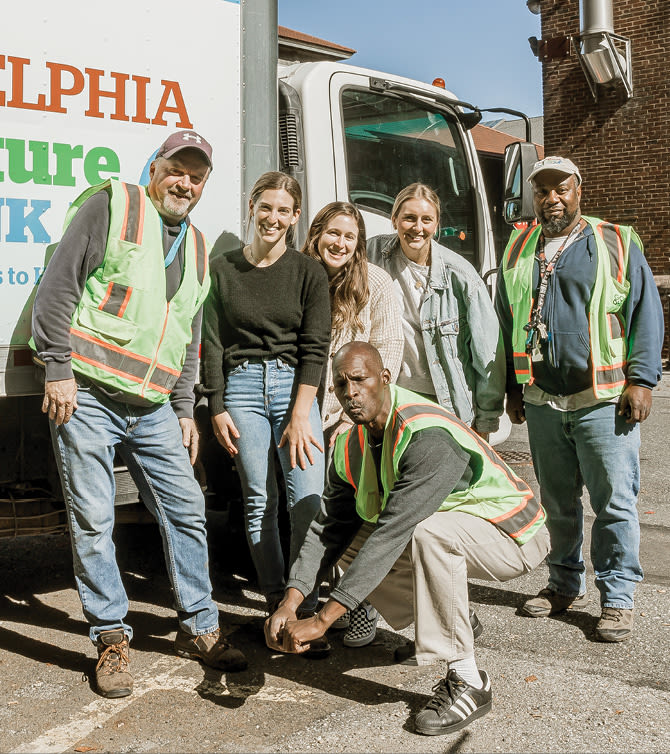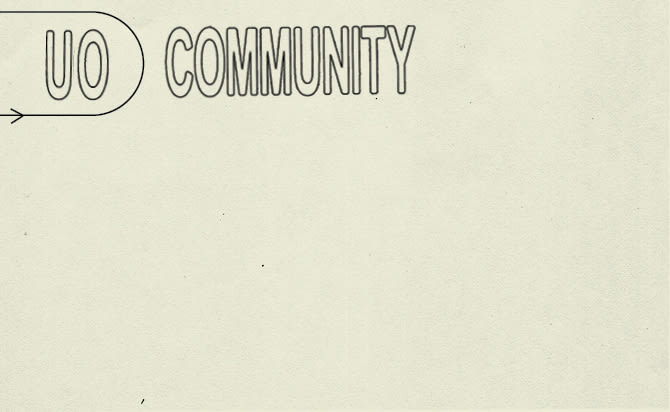

UO HOME
+
THE PHILADELPHIA FURNITURE BANK

As part of Urban Outfitter’s commitment to reducing our impact on landfills & to support the greater Philadelphia Community, we have partnered with the Philadelphia Furniture Bank to find a home for our samples. To kick off our partnership, on April 28 2022, UO donated 37 pieces of furniture and 19 boxes of additional home items collected from the UO Home team & our Home Office employees. UO will continue to support the Furniture Bank a few times a year with donations that help their beneficiaries furnish houses to make them feel like homes, and contribute to successful transitions out of homelessness for members of our community.
We spoke with Valerie Johnson, MBA, CFRE Vice President of Advancement and Special Projects at Pathways to Housing, about the organization, the impact they have in our community, and how we can all get involved to support their work.


Can you tell us about the very beginning of the furniture bank - how it started and how the mission was formed?
Pathways to Housing PA was founded in 2008, and we provide Housing First services to people with mental health disabilities who have experienced chronic homelessness. One paint point we shared with our fellow housing and human services organizations was acquiring furniture for individuals and families who were exiting homelessness. There was no centralized place to obtain what you need; case managers would have to shop at several different places and spend a significant amount of money to furnish their client’s homes.
In 2014, our CEO spearheaded establishing the Philadelphia Furniture Bank to be that resource, not just for our agency but for the more than 50 agencies we now partner with as members. This year, we’re on track to furnish 1,200 homes; that’s 1,200 case managers who can support their clients in obtaining an entire household’s worth of furniture in one visit. PFB has helped to eliminate a bottleneck in the system and get people housed faster, while also keeping several million dollars’ worth of furniture out of landfills.
Who does the furniture bank serve and what does impact look like for these communities?
PFB works with 50+ member agencies who serve individuals and families exiting homelessness in Philadelphia. That includes individuals and families exiting homelessness, victims of domestic violence, young adults leaving foster care, immigrant and refugee families, victims of personal and natural catastrophes, returning citizens, veterans, reunifying families, and those exiting emergency shelter.
Being able to furnish an entire home after just one visit makes a huge difference to our client’s timelines for exiting homelessness. Especially for families with children, having the ability to obtain beds, dressers, and other essentials in one stop is the difference between exiting homelessness now, and spending an additional month saving money in a temporary living situation.


How does the furniture bank function? What does a ‘typical’ client visit look like?
Case managers at our member agencies can refer their clients and schedule an appointment at PFB. Once at the appointment, clients will walk through our showroom with the help of a personal shopper to choose the furniturethat fits their style and their new space. At the end of the appointment, clients have the choice of taking the furniture with them immediately, or having the furniture delivered next day.
Choice is something that is often denied those who are experiencing homelessness, and it’s important to us that clients are able to choose the items that will be in their new homes. We have a variety of items donated to us from individuals, families, and businesses, and this allows clients the opportunity to take their time and choose items that they like, that fit their style, that will help them truly transform their new house or apartment into a home.
What are the most wanted items? What are the most needed items?
Our most needed items are small kitchen tables, small dressers, and small and medium sized couches. Philadelphia is a city of many apartments, many of which are in homes that were not intended to be split into apartments. That often leads to small, tight spaces that must be navigated to get furniture into the apartment. We want our clients to be able to choose furniture one time, rather than choosing a table that doesn’t end up fitting into their new home and having to return and choose something else. Many of our donors reside in the suburbs and have larger doorways, entryways, and staircases than our clients have, which means we struggle to obtain smaller items that fit more easily into homes.
Our most wanted items are sturdy pieces that will withstand moving, constant use, and children. We are fortunate to receive many dressers and desks from dormitories, which are built to withstand use by college students. Those are perfect items for families with smaller children as well, because they are built to last and withstand constant use. Modern furniture is sometimes not built to last generations, despite being trendy, and most of our clients gravitate towards the sturdy pieces built to last.


From your perspective, how does having a home affect people’s lives?
Having a home is the foundation for literally everything in your life. You can’t get a job without an address to list on the application. You can’t send your kids to school. You can’t apply for benefits or insurance. You can’t access technology. The list of things you can’t do without a home is very long; the list of things you can do to help rebuild your life is very short. Your main goal is to find a way to feed yourself, and find somewhere safe to sleep at night. Once someone is stably housed, they’re able to shift their attention from survival to other priorities that will help them to get back on their feet.
Do you have a moment that you feel has been most impactful in your work?
I think folks expect me to say the most impactful moment is someone getting the keys to their new apartment, but for me the most impactful moments are much later. When someone who has lived unsheltered for a decade or more tells me that their favorite thing to do in their new apartment is to cook breakfast for themselves every morning. Someone who wasn’t able to access healthcare while unsheltered is now in remission from cancer because they had the stability and resources to access appropriate care. A father and grandfather is able to reconnect with his family and become a part of their daily lives again – even babysitting his granddaughter on a regular basis to support his daughter’s work schedule. It takes time to find stability and be able to rebuild your life after experiencing homelessness, but seeing folks thrive after being given the resources and supports they’ve been lacking for a very long time is always inspiring.
What would you share with folks who want to get more involved or support your work? What is the best way to do that both with the furniture bank and beyond in Philadelphia at large?
There are many ways to support the Philadelphia Furniture Bank! First and foremost, monetary donations are always incredibly helpful, no matter the amount. The nominal fees our member agencies pay each year in no way cover our operating expenses, and we rely on philanthropy to support our operations. Second most important is furniture donations: we are always looking for donations from both individuals and businesses to ensure that our clients are able to choose from a wide variety of options. We also work with volunteers, both individuals and groups, throughout the year to support us with personal shopping, painting, assembling, delivering, and organizing furniture.

